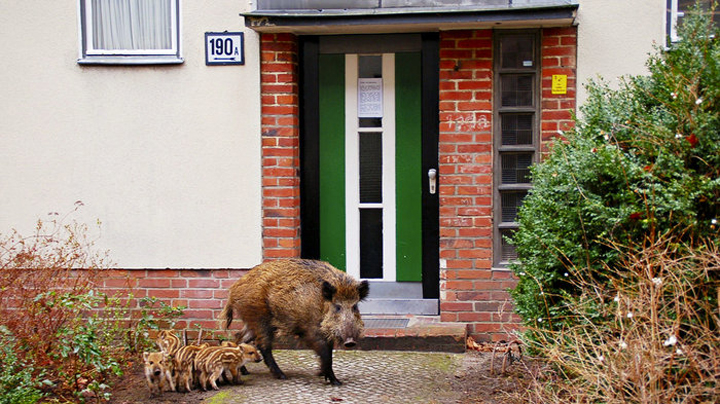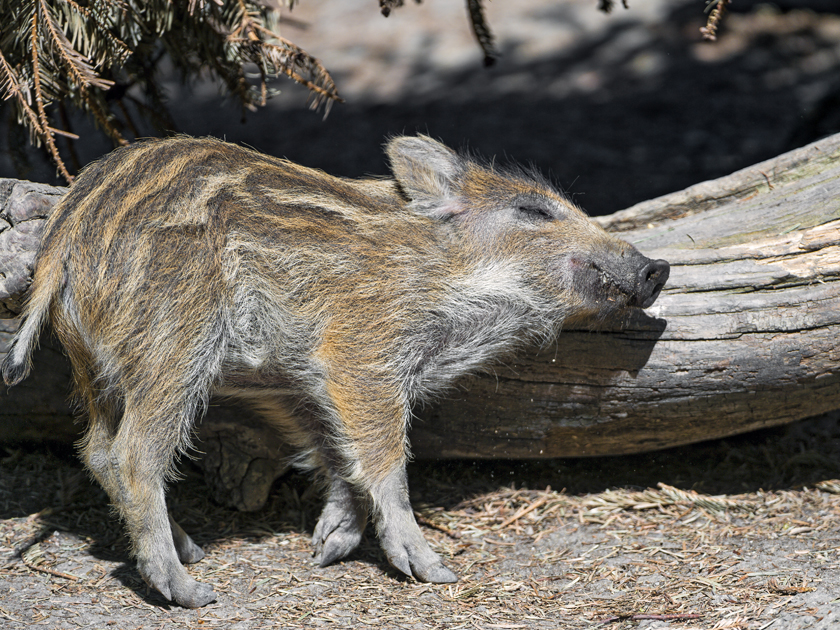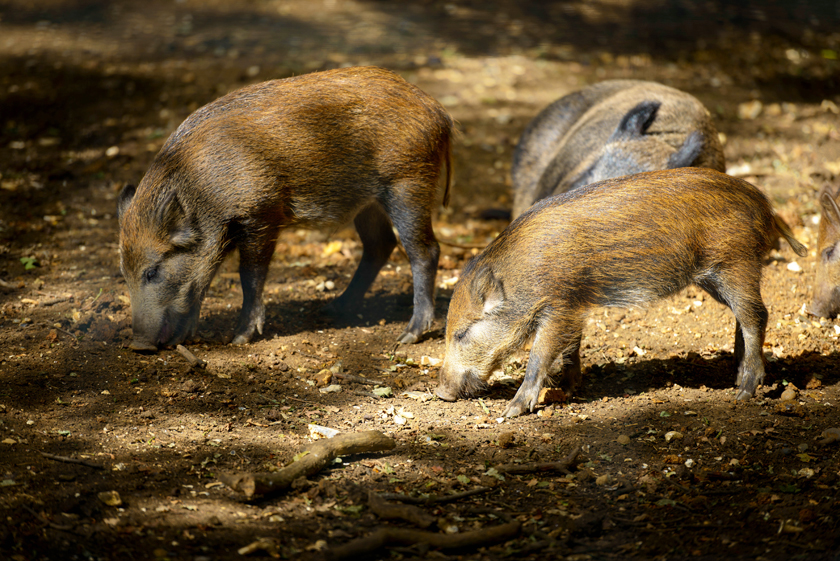In Europe, Big-City Swine Come Out Of The Woods
Even in urban areas, mild winters are fueling a baby boom among European wild boars.
By Vicki Croke

Normally elusive, wild boars do stroll city streets sometimes–as they do here in this picture from northern Poland. Photo: Czarek Sokolowski/AP.
Perhaps the real reason French women don’t get fat—a factor not considered in that best seller from years ago—is because they are running from wild boars.
OK, that’s a joke, but the explosively expanding wild boar population in Europe has led to a number of strange and sometimes dangerous encounters with people in France, the UK, and Germany, among others. Though largely elusive and people-shy, the animals have broken into a royal pigpen, bitten suburbanites, attacked a policeman, crashed through a church window, and even injured a man in his own Berlin apartment (it’s estimated there are more than 4,000 within that city’s limits).
And now, a new scientific report from the University of Veterinary Medicine in Vienna, and published in the journal PLOS ONE, not only confirms that there is a kind of boar baby boom, but also reveals what’s fueling it: climate change.
Wild boar numbers in Europe have been increasing over the last 30 years, according to researchers in Vienna. And in their new study, they trace the cause to two factors: One, milder winters, because, as the scientists say, “in warmer winters, more piglets survive,” and two, more frequent bumper crops of beechnuts and acorns. “In so-called mast years,” the scientists say, “when these trees bear a lot of fruits there is abundant feed available for the pigs.”
The study, according to a statement, “compared annual wild boar population growth to temperature and precipitation data from twelve European countries, with data being available for up to 150 years in some regions. They identified a clear trend.”
Wildlife biologist and lead author Sebastian Vetter explained in a statement, “There is a sharp increase in the number of wild boars after mild winters. As mild winters are becoming more frequent, also wild boar populations are growing exponentially.”

It’s estimated that there are about 4,000 wild boars within Berlin’s city limits. Photo: Florian Mollers.
The scientists say the main reason for this is thermoregulation. “If temperatures are very low, a lot of energy is necessary in order to maintain a high body temperature. As a consequence, less energy is available for reproduction and rearing the offspring in the following year. Furthermore, harsh winters claim the lives of many young animals.”
Although irregular, those bumper crop “mast years” are becoming more frequent. And lots of beechnuts and acorns can help boars survive the coming winter, even if it’s a cold one.
Since boars can weigh more than 300 pounds, run at 30 mph, and sport tusks, having more of them around isn’t necessarily popular with people. In Berlin, residents can be fined for feeding them. There have been organized culls in many places, and in Italy, an agriculture lobby has called the wild boar situation a national emergency.
Increasing boar numbers have been most problematic in agricultural areas—where they raid crops—but they have also invaded more cosmopolitan addresses too.
There was the wild boar searching for food who made his way into a 54-year-old man’s Berlin apartment in 2004 and then bit him when confronted. Just days ago, a 77-year-old man walking his dogs near his home in a rural area outside Palermo, Sicily was killed by wild boars.
Earlier this year, Princess Anne reported that a randy wild boar had broken into her pigpen in Gatcombe Park, Gloucestershire where her domestic sows were in season, killing one of her boars.
A wild boar crashed through a window at a church in Frankfurt in 2008, sending the screeching children inside running.

The study’s authors say that “Wild boars produce a surprisingly large number of young animals.” Photo: Thorsten Wiehle/Berlin Forestry Commission.
Groups of wild boar are known to be thriving in the forests just outside Paris and Rome.
They have been “invading Marseille,” according to a headline in The Telegraph last year. And their numbers have “rocketed” in Poland, according to the same paper.
The authors of the wild boar study have shown that the animals also play the numbers game well. “Wild boars produce a surprisingly large number of young animals compared to other ungulates,” Vetter said in a release. “This enables the strong growth of populations which we are currently observing. Therefore we are particularly interested in the factors that influence reproduction of this species.”
In the United States, by the way, wild boars are considered an invasive species (they were brought here in the 1500s).


